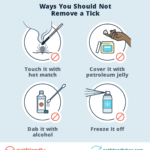How Old Is Too Old To Spay A Dog
As a responsible dog owner, one of the most important decisions you’ll make for your furry friend is whether or not to spay them. Spaying, also known as ovariohysterectomy, is a surgical procedure that involves removing a female dog’s uterus and ovaries to prevent pregnancy and eliminate the risk of certain health issues.
But when is the best time to spay your dog? Is there such a thing as “too old” to spay? In this article, we’ll explore the topic of spaying dogs and answer some common questions about age and timing.
What is Spaying and Why is it Important?
Spaying is an essential part of responsible pet ownership. It not only helps control the population of unwanted dogs but also provides numerous health benefits for your furry friend.
By removing a female dog’s reproductive organs, you can prevent them from going into heat, which can cause unwanted behaviors such as urine marking, aggression, and restlessness. Additionally, spaying can help reduce the risk of certain diseases such as uterine infections and mammary tumors.
The ideal time to spay a dog varies depending on factors such as breed, size, and health status. However, most veterinarians recommend spaying at around six months of age before the first heat cycle.
Is Six Months Old Too Late to Spay a Dog?
Many people assume that if they don’t spay their female dog before their first heat cycle, it’s too late to do so. However, this isn’t necessarily true.
While spaying at six months old or younger is generally recommended, there are still many benefits to having your dog spayed later in life. In fact, some veterinarians believe that waiting until after your dog’s first heat cycle can reduce the risk of certain health problems.
If you’re considering spaying your older dog, it’s essential to speak with your veterinarian first. They can evaluate your dog’s overall health and determine if they’re a good candidate for surgery.
What are the Risks of Spaying an Older Dog?
Like any surgical procedure, spaying an older dog carries some risks. However, these risks are generally low and can be minimized with proper preparation and care.
Some potential complications of spaying an older dog include:
– Increased anesthesia risk: Older dogs may be more sensitive to anesthesia, which can increase the risk of complications during surgery.
– Longer recovery time: Older dogs may take longer to recover from surgery than younger dogs.
– Post-surgery complications: There is a small risk of post-surgical complications such as infection or bleeding.
To minimize these risks, your veterinarian will likely conduct a pre-operative evaluation to assess your dog’s overall health. They may also recommend pre-operative bloodwork or other tests to identify any potential issues before surgery.
When Should You Consider Not Spaying Your Dog?
While spaying is generally recommended for most female dogs, there are some cases where it may not be appropriate. For example, if your dog has a medical condition that makes surgery risky, your veterinarian may recommend against spaying.
Additionally, if you plan on breeding your dog in the future, spaying is not an option. However, it’s essential to consider the responsibility that comes with breeding and ensure that you have the resources and knowledge necessary to do so safely and ethically.
Conclusion
Spaying your female dog is an important decision that should be made with careful consideration of their health and well-being. While six months old is generally considered the ideal time for spaying, there are still many benefits to having your older dog spayed later in life.
If you’re unsure about when or if to spay your dog, it’s always best to speak with your veterinarian. They can provide guidance based on your dog’s individual needs and help you make an informed decision about their care.
Remember, by choosing to spay your dog, you’re not only helping to control the pet population but also providing them with a healthier and happier life. So, don’t hesitate to take the necessary steps to ensure your furry friend’s well-being.



